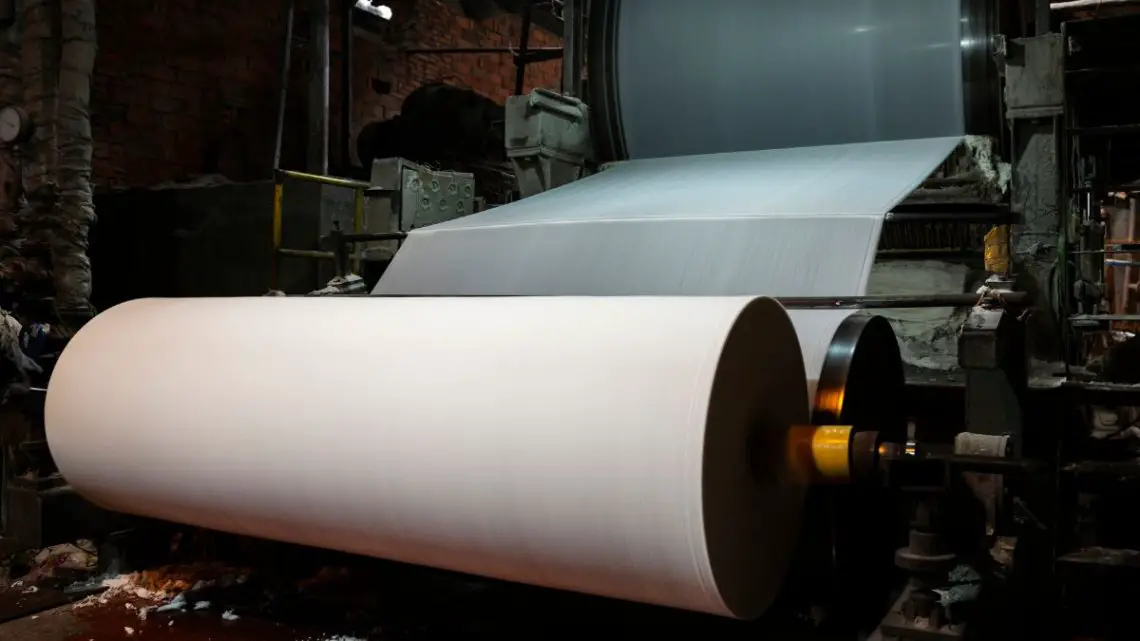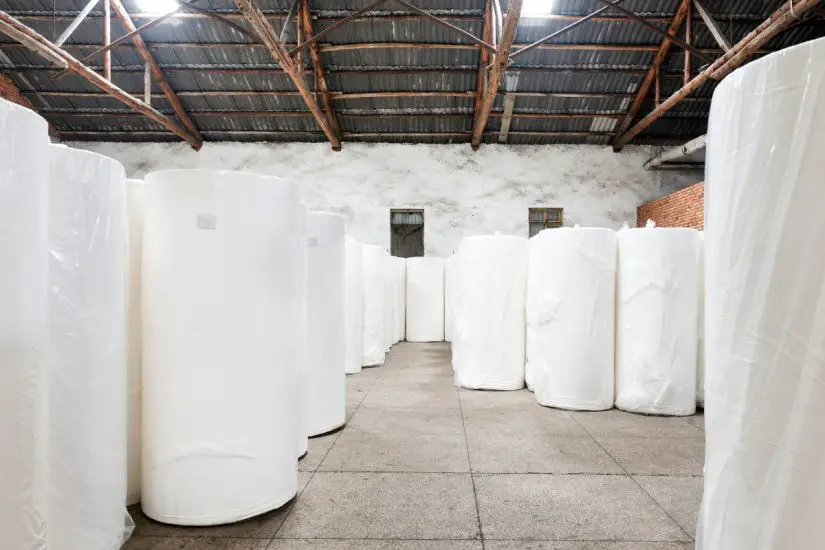
Essity Receives Funding for Trailblazing Hydrogen Power in Paper Production
July 10, 2023Essity will receive multi-million pound funding from the UK Government for its H2 trial.
The Swedish company Essity – a global leading hygiene and health company that manufacturers name brand one-use products, including tissue, toilet rolls and kitchen towels – has secured £2.2 million ($2.8 million) from the UK Government to try using hydrogen power instead of natural gas in its paper product manufacturing process at its Tawd Mill in Skelmersdale.
The paper mill will become the first in the UK to use hydrogen for this purpose.
Essity’s Skelmersdale Tawd mill produces giant roles of paper which are shipped to its other production sites around the UK. These giant roles of paper are then converted into the finished products, such as Plenty kitchen towels and Cushelle toilet rolls.
The trial will involve the existing machine at the Tawd mill. Part of the machine’s drying process powered by natural gas will be switched to hydrogen power to cut down on CO2 emissions. This switch has the potential to lower the CO2 emissions that are currently produced from the paper manufacturing process by 66%.
If the hydrogen power trial is successful, the technology could be rolled out at the mill on a permanent basis as well as at other Essity production sites, including those in Trafford Park and Oakenhold. The £2.2 million in funding Essity will receive is through the Government’s £55 million ($70.6 million) Industrial Fuel Switching Competition, as part of the £1 billion ($1.28 billion) Net Zero Innovation Portfolio (NZIP).
The hydrogen power trail is part of Essity’s sustainability goals.
Andrew Hearns, a spokesperson who has led the project for Essity, said that “sustainability” is a major part of the company’s global business strategy.

“We are committed to reducing our own carbon emissions by 35 per cent by 2030 and reaching net zero by 2050,” Hearns explained, adding that “If this trial is successful, replacing natural gas with low carbon hydrogen would dramatically reduce CO2 emissions at Tawd and is a major step in the right direction to help us achieve our environmental goals.”
The trail will start in 2024.
 Following a £12 million ($15.4 million) investment, the Tawd mill was recommissioned in 2017 and helped Essity to become the UK’s largest manufacturer of premium TAD (Through Air Dried) tissue paper. TAD makes softer and stronger toilet rolls. However, this requires an energy intensive process, and prompted the company to seek greener fuels for production.
Following a £12 million ($15.4 million) investment, the Tawd mill was recommissioned in 2017 and helped Essity to become the UK’s largest manufacturer of premium TAD (Through Air Dried) tissue paper. TAD makes softer and stronger toilet rolls. However, this requires an energy intensive process, and prompted the company to seek greener fuels for production.
According to Hearns, the trial to determine if hydrogen power can be safely and efficiently used as an alternative fuel will begin in 2024.
Hydrogen FAQ’s – Paper Industry Carbon Footprint and Hydrogen Power
- What is the carbon footprint of the paper industry? The carbon footprint of the paper industry can vary significantly depending on the chemicals used in the process. As per the data from 2021, the pulp and paper sector was responsible for about 190 Mt of CO2 emissions, which accounted for about 2% of all emissions from the industry.
- How has the carbon footprint of the paper industry changed over time? Carbon emissions in the paper industry in Europe have decreased by 29% since 2005. This suggests a decoupling of energy use and emissions in the sector, indicating efficiency improvements and the adoption of cleaner technologies.
- Can hydrogen replace natural gas in the paper industry? Hydrogen, particularly green hydrogen, is seen as a potential solution for reducing the carbon footprint of the pulp and paper industry.
- What are the potential benefits of using hydrogen in the paper industry? Using hydrogen instead of natural gas could significantly reduce carbon emissions. Hydrogen, when burned, only produces water as a byproduct, making it a clean source of energy. However, the process of producing green hydrogen must also be sustainable for this to be an effective solution.
- What is the difference between green and blue hydrogen? Green hydrogen is made by using renewable energy sources to power the electrolysis of water, resulting in zero greenhouse gas emissions. Blue hydrogen is created from natural gas through a process called steam methane reforming, which also captures and stores the produced CO2. However, this process is not entirely carbon-free.
- Is blue hydrogen a low carbon option? Blue hydrogen is often considered a lower-carbon option compared to fossil fuels. However, greenhouse gas emissions from the production of blue hydrogen can still be quite high, particularly due to the release of methane, a potent greenhouse gas.
- How can the carbon footprint of the paper industry be reduced? The carbon footprint of the paper industry can be reduced by implementing more efficient manufacturing processes, using renewable sources of energy, increasing the use of recycled materials, and reducing waste.
Ready to test your knowledge on the most abundant element in the universe? Take our fun and engaging Hydrogen Quiz now! [forminator_quiz id=”58712″]




 With over 15 years of reporting hydrogen news, we are your premier source for the latest updates and insights in hydrogen and renewable energy.
With over 15 years of reporting hydrogen news, we are your premier source for the latest updates and insights in hydrogen and renewable energy.